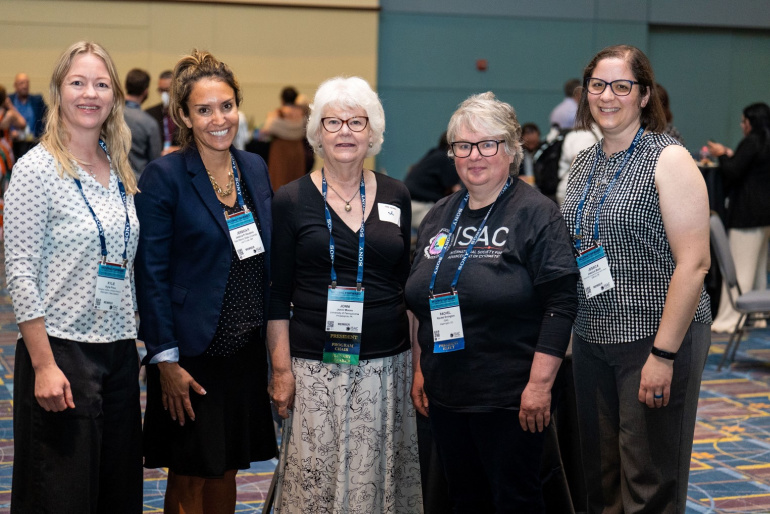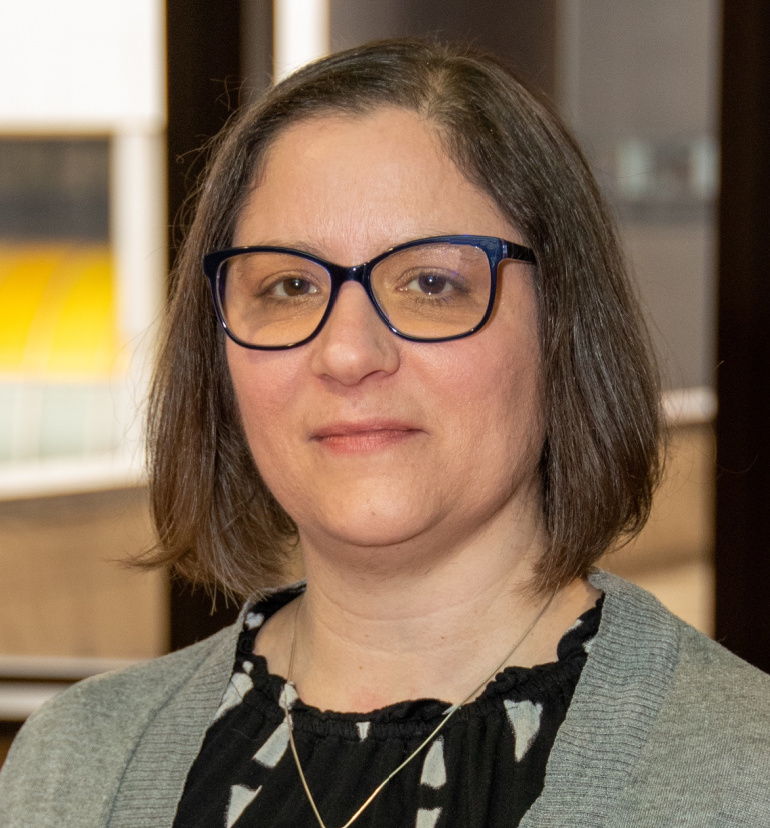
When Wayne State’s Jessica Back became treasurer of the International Society for the Advancement of Cytometry (ISAC), the election was nothing short of historic, marking the first time in the organization’s 50-year history that the executive committee was comprised solely of women.
“This election was important because women in STEM are still underrepresented,” said Back, who serves as associate director of the School of Medicine’s Microscopy, Imaging & Cytometry Resources Core. “This society dates back to the 1970s, and having an all-female executive committee is important because women are traditionally outnumbered in science.”
ISAC’s mission is to serve a multidisciplinary community by leading technological innovation, scholarship and the exchange of knowledge in the quantitative cell sciences.
“ISAC is made up of people who are academic researchers, people who are running the technology in core facilities like I do, people who are designing the different instruments and people who are designing the computer algorithms to analyze the data,” Back said
Cytometry is the quantitative analysis of cells and cell systems. Back uses a technology called flow cytometry, which is detects and measures physical and chemical characteristics of a population of cells or particles.
“It allows us to look at each individual cell in a mixed population and look at multiple markers on them,” Back said. “It's used a lot of different places, especially in clinics and research, so it can be used for diagnostics on the clinic side, but it can also be used in research. We have the technology here and support the research at the university, and at the cancer center.”
Flow cytometry played a key role in COVID-19 research.
“It was especially useful in COVID research when scientists were trying to figure out what the immune system was doing in response to the COVID-19 virus because it allows us to take a blood sample or lung sample and see what's happening and what cells are responding to in those environments,” Back said.
“The technology has proven that it’s important. I don't remember the exact statistics, but almost all of the COVID research that has been published over the last two years has involved flow cytometry because they're looking at that immune response, and the most effective way to do that is through this technology.”

Back said ISAC’s goal is to educate people on how to use flow cytometry technology.
“We want to make sure people are using best practices, that they're using the technology appropriately, and that the data is being shared and analyzed in the right way so that you have that rigor and reproducibility that's important in science,” Back said. “The biggest part of our outreach is education. We also have programs that get these tools into the hands of people in countries that don't have the funding available to really provide that kind of technology —and we offer expertise for their scientists and clinicians.”
At the Microscopy, Imaging & Cytometry Resources Core, Back works with researchers throughout the Wayne State community.
“Researchers from all across campus and the cancer center can come and bring their cells to us,” Back said. “The instruments that we have range in price from $100,000 to half a million dollars, so researchers don’t really have them in their own labs. We provide a centralized space, and we provide expertise. We charge them a small fee to use the facility for their research, and we do training and education. ISAC helps with education, and it helps with networking, so we know what new technologies are coming, and we’re able to identify instruments that are going to help researchers at Wayne State.”
Back said she got involved with cytometry after her postdoctoral training because she wanted to be involved in research but didn’t necessarily want to be the primary investigator.
“I didn't want to be writing grants all the time and have my own research, but I wanted to have my hands on the research that was happening,” Back said. “What I enjoy about being in a shared resource facility is that I'm able to contribute to the science that's happening, and I'm able to support the research that's going on here, and really be involved in it, without having to worry about writing a grant. It allows me to see a much broader image of what's happening across campus because we see people coming from engineering who are developing probes for imaging or we see people coming from the cancer center who are trying to develop anti-cancer drug treatments, and we have a few people from the CURES center who are looking at the effects of mercury on the immune system, so we kind of get to see a little bit of everything. I really enjoy that part of what I do, being part of that overall scientific advancement.”
